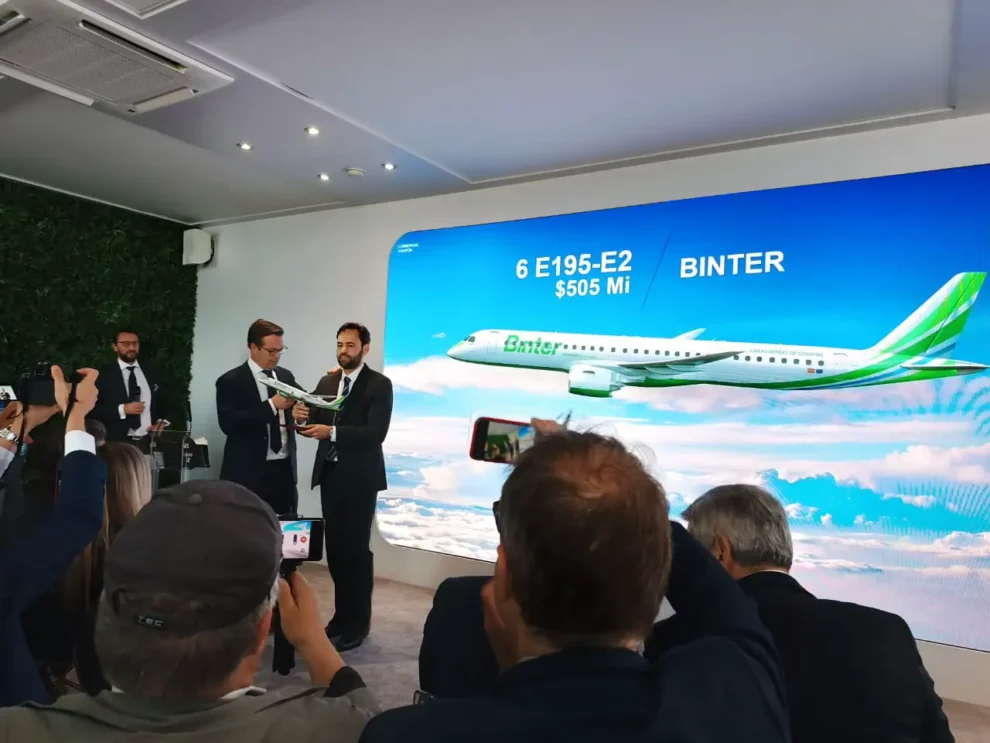At the Paris Air Show, Darren Hulst, Boeing’s VP of Commercial Marketing, presented the company Commercial Market Outlook, where it forecasts a demand for 42,000 new aircraft within the next 20 years.
Aviacionline was able to talk to Hulst and to dig a little deeper in Latin America’s role on that demand, the plans of the company in the region and how it is leading the recovery after the pandemic.
Aviacionline: What are Boeing’s plans for Latin America, and what do you think about the recovery in the region?
Hulst:The recovery in Latin America has been remarkable. In terms of flights today versus before the pandemic, Latin America is actually leading the world in growth with over 110% of the flights that existed previously.
This is reflective of the resilience and recovery we’ve seen both domestically and internationally, highlighting the importance of aviation to the Latin American market.
Aviacionline: Is the return to growth after two years more connected to an economic recovery or is it related to trends you saw before the pandemic?
Hulst: The growth we are witnessing is more aligned with the trends we saw before the pandemic. Latin America is projected to have a higher growth rate than the global average due to its economies growing faster.
In addition, new business models like low-cost carriers are stimulating traffic and building new connections, and we expect the adoption of these pre-pandemic trends to continue in Latin America.
Aviacionline: Do you think the cargo market growth, for instance the addition of converted 737-800 aircraft by Aerolíneas Argentinas and Mercado Livre, is a result of consumer culture change born in the pandemic?
Hulst: This is partly due to the pandemic but largely a function of continued growth in economic activity. The growth in e-commerce and the need for same-day, next-day, or two-day delivery structures or networks has accelerated.
Aircraft like the 737-800 BCF are making this possible by providing short-haul connectivity, and we’re seeing this trend in Latin America and Southeast Asia, among other key markets.
Aviacionline: Is the demand for aircraft conversions still growing in the region, especially considering the new conversion plant (COOPESA) in Costa Rica?
Hulst: Yes, the demand for aircraft conversions is still growing. Initially, during the pandemic, e-commerce demand drove growth. Now, we see a lot of demand for replacement conversions as airlines aim to achieve efficiency savings by replacing older models like 737 classics with new technology. This renewal of the fleet also allows for more productivity and readies them for the market’s return to growth, expected to be six months away or so.
Aviacionline: Has Mexico’s FAA downgrade impacted Boeing’s business there?
Hulst: While the downgrade hasn’t had a huge impact, it might have temporarily slowed down some of the airlines’ near-term growth plans. However, it hasn’t affected the long-term need for aircraft. When airlines are ordering today, they’re thinking about what they’ll need in three to four-five years.
Aviacionline: Is there a market for the 737-10 and 777X aircraft in Latin America?
Hulst: Absolutely, there is a market for these aircraft in Latin America. The 737-10 is ideal for airlines looking to grow in dense, high-frequency, or high load factor markets such as domestic Brazil, between capitals in Latin America, or inside Mexico. The aircraft allows airlines to retain the familiarity of the 737 family while expanding their fleets.
As for the 777X, the biggest opportunity lies in the freighter variant for long-haul operations, given the growing market between Latin America and Asia. The passenger variant could be considered by airlines that currently operate large aircraft like the 777. However many airlines, like Avianca and LATAM, have opted for the 787 to simplify their long-haul fleets and become more efficient.
Source: Aviaci
















